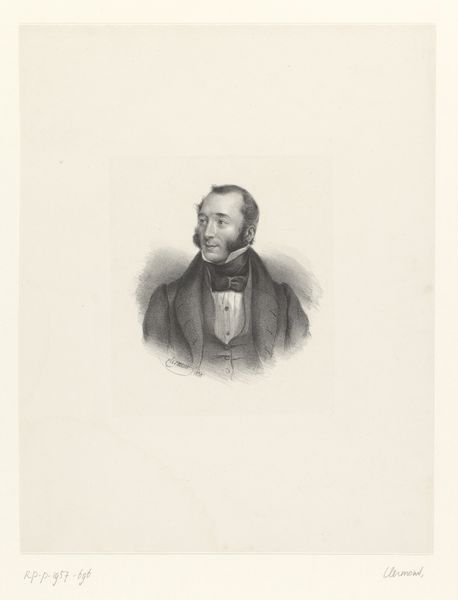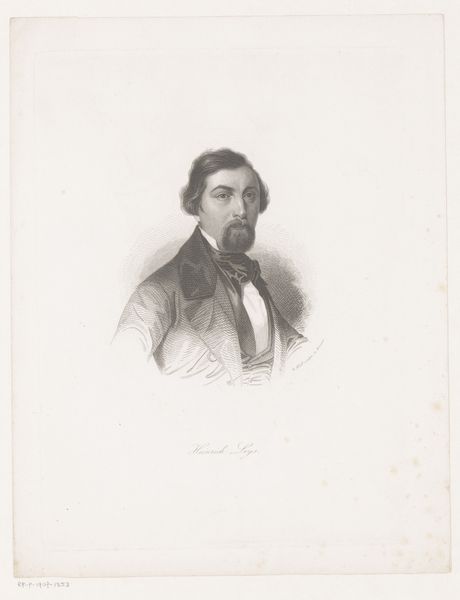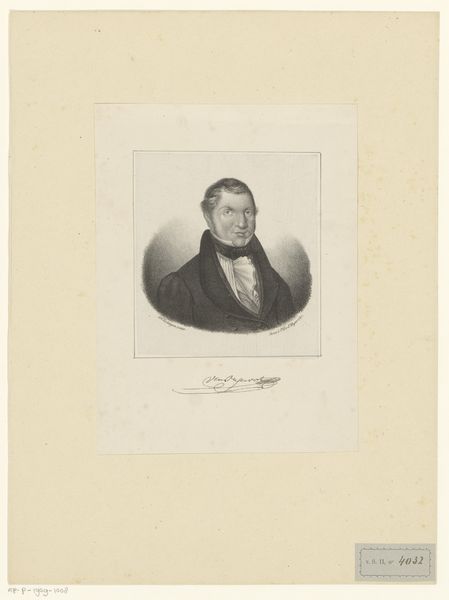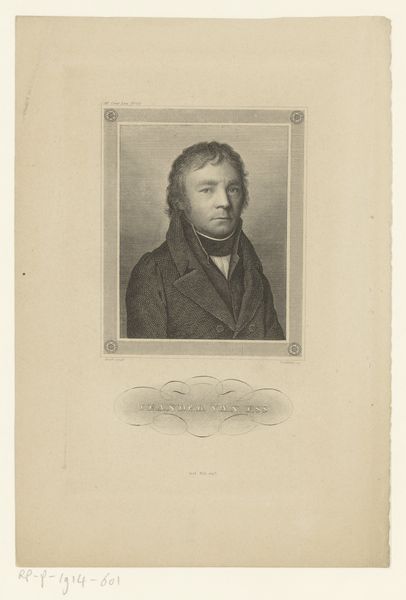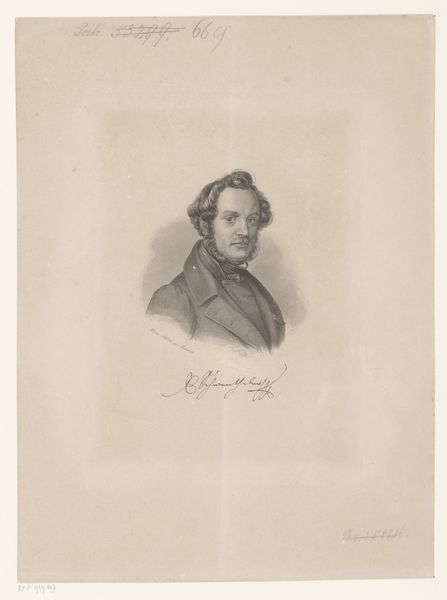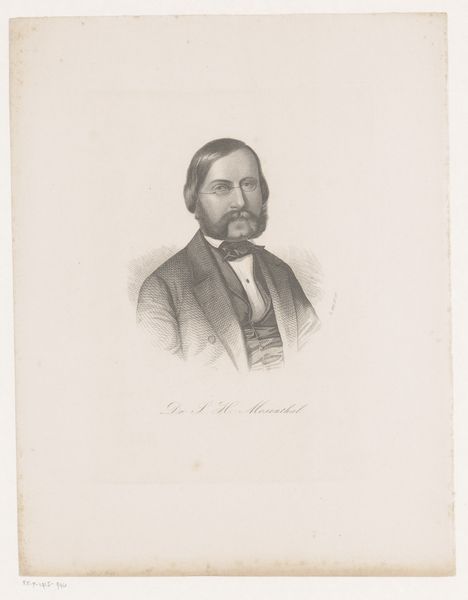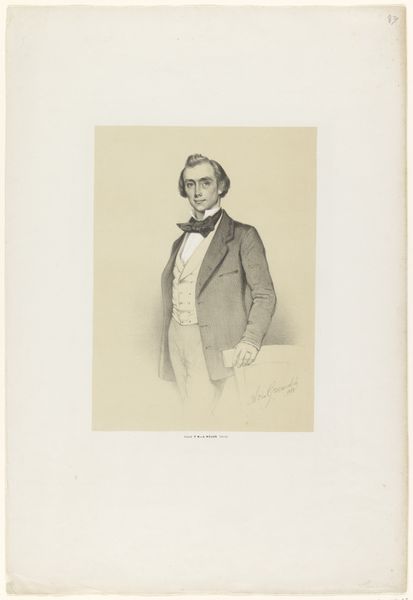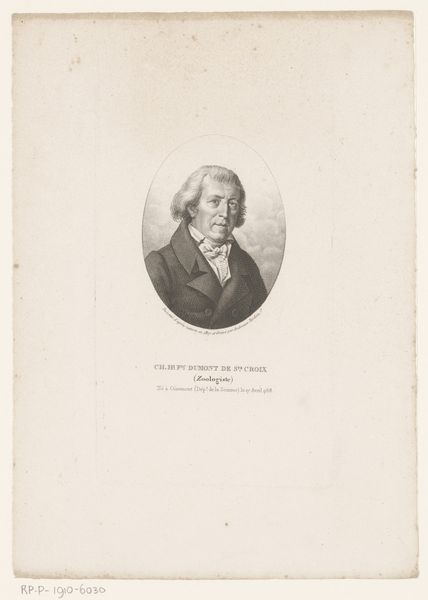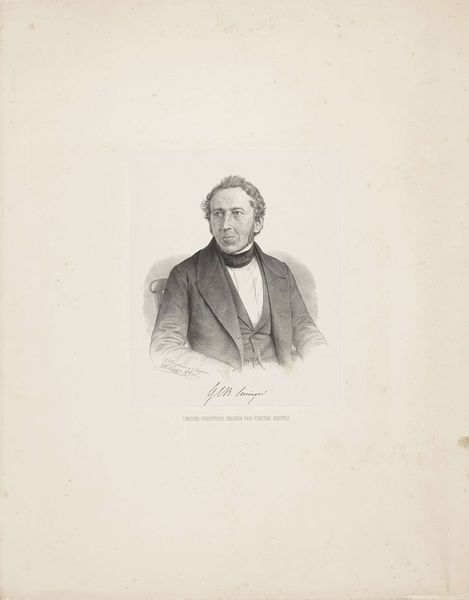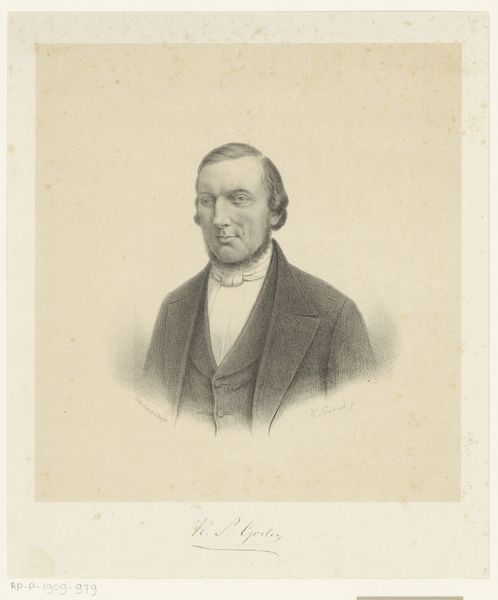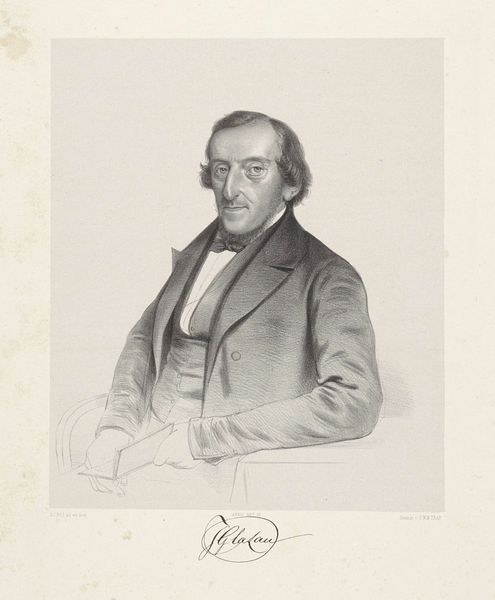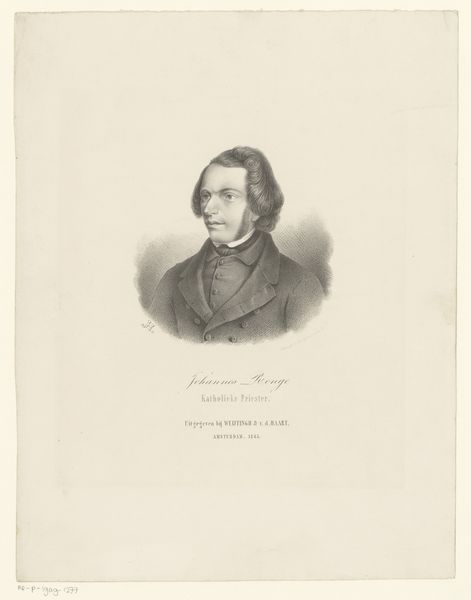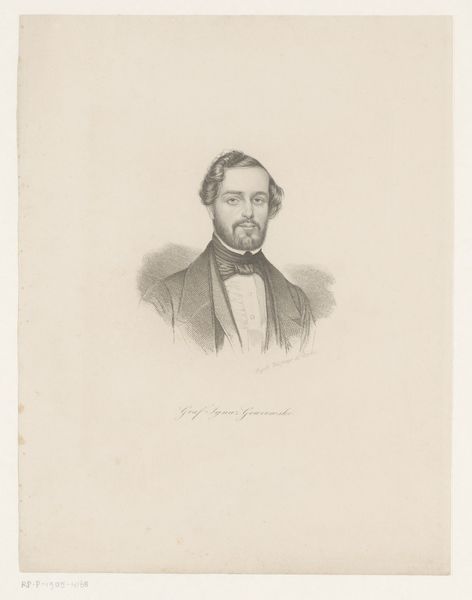
print, engraving
#
portrait
# print
#
old engraving style
#
romanticism
#
engraving
#
realism
Dimensions: height 290 mm, width 192 mm
Copyright: Rijks Museum: Open Domain
Curator: Before us we have a portrait, specifically an engraving, dating from about 1829 to 1840. The engraving captures the likeness of Eugène Sue, penned by Johann Georg Nordheim. Editor: It’s got this air of serious contemplation. Makes you wonder what occupied his mind, doesn’t it? Sort of like he’s carrying the weight of the world. The lighting adds to that; almost Rembrandt-esque, that chiaroscuro thing happening. Curator: Indeed. Sue was a celebrated, albeit controversial, figure of his time. We need to think about what role visual media played then. Print was paramount, so portraying him via engraving grants him a certain accessibility. His intellectualism now is commodified. Editor: Accessible? Maybe. Intimidating? Absolutely. Those eyes bore right through you! I bet he was quite a character. Look at the details—the slightly disheveled hair, the little crooked bow tie... he's making a statement, or he's blissfully unbothered. Probably both, a contradiction! Curator: The choice of medium is really what locks in that accessibility—but let's think about realism, too. Engraving allows for incredible detail, conveying a sense of almost photographic accuracy—especially valuable given its historical context. That bow tie shows a care, as do his clean shaves on the side and around the upper lip. Editor: Oh, absolutely, it’s a curated reality! It's like the Instagram filter of the 19th century; this kind of romanticism in the face and jaw. Speaking of curated, this rectangular portrait format looks severe to me. He's sort of visually confined, stuck in this rectangle for eternity. What’s your read on that? Curator: I consider it another marker of social standing in a patriarchal context—framing Sue and immortalizing the idea that he has things worth saying that still echo to the world outside of that boundary line. I find that sentiment really profound here. Editor: And now he's sparking a new dialogue here between the two of us! It’s strange how a face etched in ink can still prompt so much reflection about then and even here and now. Curator: It illustrates the importance of understanding visual culture; it offers us frameworks for critiquing and understanding today's portraits, selfies, and digital renderings. Editor: Couldn't have said it better.
Comments
No comments
Be the first to comment and join the conversation on the ultimate creative platform.
